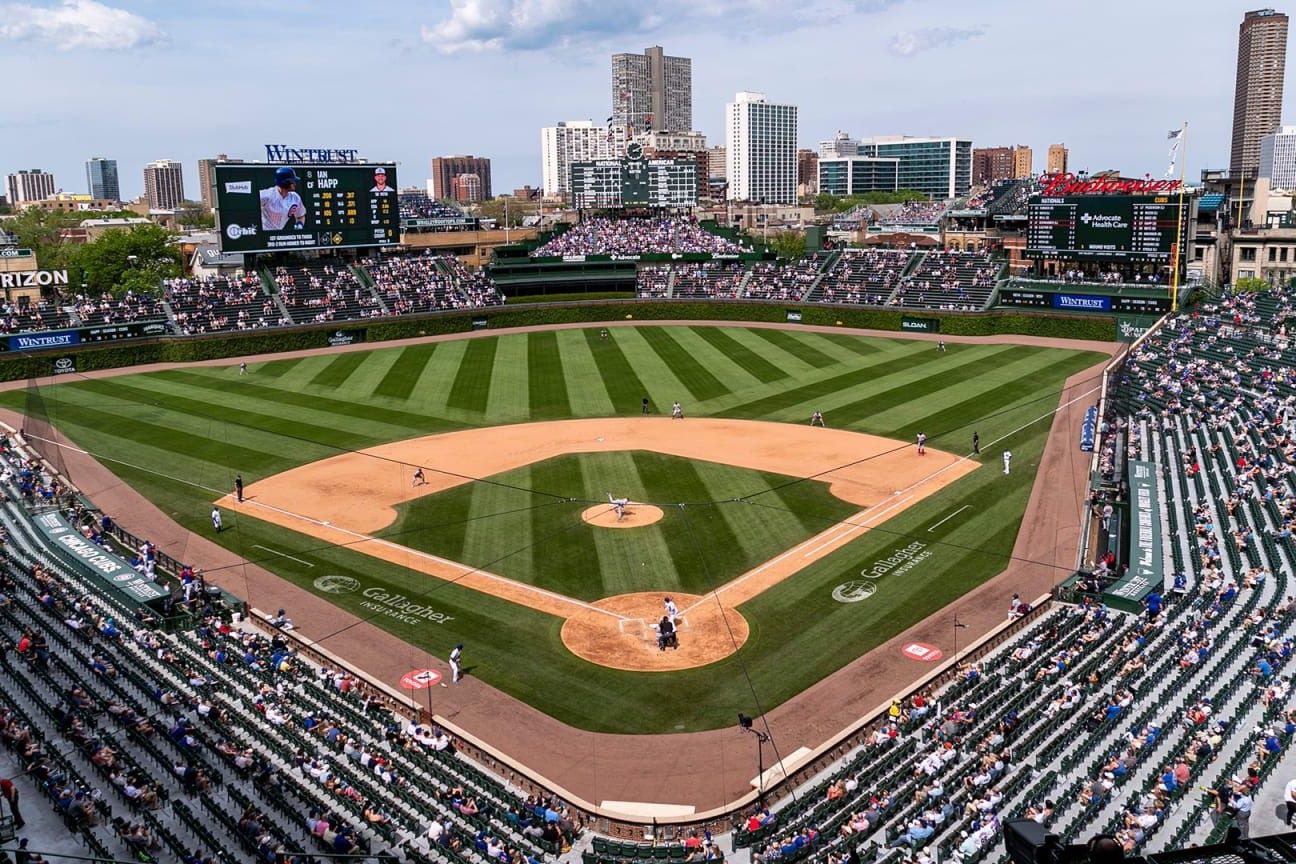The Intriguing Story Behind Chicago’s Wrigley Field

Have you ever wondered about the history behind Wrigley Field? This iconic ballpark, located in Chicago, has been home to the Cubs since 1916. Known for its ivy-covered walls and hand-turned scoreboard, Wrigley Field holds a special place in baseball history. Originally named Weeghman Park, it was built in 1914 for the Chicago Whales of the Federal League. When the Cubs moved in, the park underwent several changes, including its famous name change in 1926 after chewing gum magnate William Wrigley Jr. Today, Wrigley Field remains a beloved landmark, drawing fans from all over to experience its unique charm and rich history.
The Birth of Wrigley Field
Wrigley Field, home to the Chicago Cubs, has a rich history dating back to its opening in 1914. Originally named Weeghman Park, it was built for the Chicago Whales of the Federal League. Let's explore some key moments that shaped this iconic ballpark.
Weeghman Park's Inauguration
Charles Weeghman, a Chicago restaurateur, financed the construction of the stadium. It opened on April 23, 1914, with a game between the Chicago Whales and the Kansas City Packers.Cubs' Arrival
After the Federal League folded in 1915, the Cubs moved in. They played their first game at Weeghman Park on April 20, 1916, against the Cincinnati Reds.
Renaming to Wrigley Field
The stadium underwent a significant change in 1926 when it was renamed Wrigley Field. This was in honor of William Wrigley Jr., the chewing gum magnate who owned the Cubs.
William Wrigley's Influence
Wrigley bought a controlling interest in the Cubs in 1921. His investment and vision helped transform the stadium into a beloved landmark.Renaming Ceremony
In 1926, the park was officially renamed Wrigley Field. This change solidified its place in baseball history.
Iconic Features of Wrigley Field
Wrigley Field is known for its unique features that set it apart from other ballparks. These elements contribute to its charm and enduring appeal.
The Ivy-Covered Walls
Installed in 1937, the ivy-covered outfield walls are one of Wrigley Field's most recognizable features. They add a touch of greenery and make catching fly balls a challenge.The Manual Scoreboard
Also added in 1937, the hand-operated scoreboard remains a nostalgic nod to baseball's past. It stands above the center field bleachers, providing fans with game updates.
Memorable Moments at Wrigley Field
Over the years, Wrigley Field has been the site of many unforgettable events. These moments have cemented its status as a historic venue.
Babe Ruth's Called Shot
In the 1932 World Series, Babe Ruth allegedly pointed to the center field bleachers before hitting a home run. This legendary moment is still debated by fans and historians.The 2016 World Series
After a 108-year drought, the Cubs won the World Series in 2016. Wrigley Field hosted three games, including the thrilling Game 5 victory that kept their hopes alive.
Wrigley Field's Cultural Impact
Beyond baseball, Wrigley Field has influenced Chicago's culture and community. It serves as a gathering place for fans and a symbol of the city's spirit.
Concerts and Events
Wrigley Field has hosted numerous concerts and events, featuring artists like Paul McCartney and Billy Joel. These performances bring diverse crowds to the historic venue.Neighborhood Vibe
The surrounding Wrigleyville neighborhood thrives on the energy of the ballpark. Bars, restaurants, and shops cater to fans, creating a lively atmosphere on game days.
Wrigley Field's story is a testament to its enduring legacy. From its early days as Weeghman Park to its current status as a cultural icon, it continues to captivate baseball fans and Chicagoans alike.
Wrigley Field's Enduring Legacy
Wrigley Field isn't just a ballpark; it's a living museum of baseball history. From its ivy-covered walls to the iconic scoreboard, every corner tells a story. Fans flock here not just for the games but for the experience. The field has seen legends play, hosted memorable moments, and stood the test of time. Its charm lies in its ability to connect generations of fans, making every visit special. Whether you're a die-hard Cubs fan or just love baseball, Wrigley Field offers something unique. Its legacy continues to grow, reminding us why it's one of the most beloved stadiums in the world. Next time you're in Chicago, don't miss the chance to visit this historic gem. Wrigley Field is more than a venue; it's a symbol of the sport's enduring spirit.

